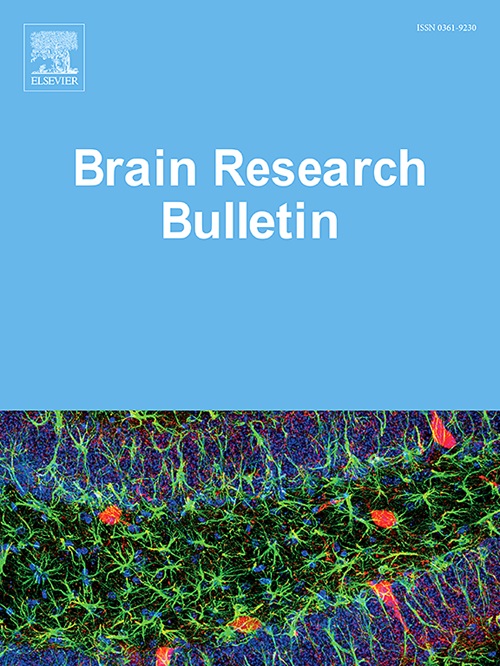认知障碍:潜在的星形胶质细胞机制。
IF 3.5
3区 医学
Q2 NEUROSCIENCES
引用次数: 0
摘要
认知障碍是一种常见的临床表现,包括患者的记忆能力、注意力、执行力、语言等功能的恶化。造成认知障碍的因素在性质上是多种多样的,包括器质性疾病和其他精神障碍。神经退行性疾病是一种常见的器质性疾病,与神经元死亡和神经胶质细胞平衡破坏有关,最终伴有认知功能障碍。因此,认知障碍经常作为神经退行性疾病的一个极其重要的指标。认知障碍对患者的日常生活产生负面影响。然而,我们对认知缺陷的确切致病途径的理解仍然不完整。中枢神经系统中最常见的胶质细胞被称为星形胶质细胞。它们在维持中枢神经系统内稳态、调节突触可塑性等方面具有广泛的功能,在脑功能中具有独特的意义。星形胶质细胞的功能障碍与认知障碍密切相关,我们正试图从神经炎症、星形胶质细胞衰老、连接蛋白、Ca2+信号、线粒体功能障碍和淋巴系统等方面来理解这一现象。本文章由计算机程序翻译,如有差异,请以英文原文为准。
Cognitive disorders: Potential astrocyte-based mechanism
Cognitive disorders are a common clinical manifestation, including a deterioration in the patient's memory ability, attention, executive power, language, and other functions. The contributing factors of cognitive disorders are numerous and diverse in nature, including organic diseases and other mental disorders. Neurodegenerative diseases are a common type of organic disease related to the pathology of neuronal death and disruption of glial cell balance, ultimately accompanied with cognitive impairment. Thus, cognitive disorder frequently serves as an extremely critical indicator of neurodegenerative disorders. Cognitive impairments negatively affect patients' daily lives. However, our understanding of the precise pathogenic pathways of cognitive defects remains incomplete. The most prevalent kind of glial cells in the central nervous system are called astrocytes. They have a unique significance in cerebral function because of their wide range of functions in maintaining homeostasis in the central nervous system, regulating synaptic plasticity, and so on. Dysfunction of astrocytes is intimately linked to cognitive disorders, and we are attempting to understand this phenomenon predominantly from those perspectives: neuroinflammation, astrocytic senescence, connexin, Ca2 + signaling, mitochondrial dysfunction, and the glymphatic system.
求助全文
通过发布文献求助,成功后即可免费获取论文全文。
去求助
来源期刊

Brain Research Bulletin
医学-神经科学
CiteScore
6.90
自引率
2.60%
发文量
253
审稿时长
67 days
期刊介绍:
The Brain Research Bulletin (BRB) aims to publish novel work that advances our knowledge of molecular and cellular mechanisms that underlie neural network properties associated with behavior, cognition and other brain functions during neurodevelopment and in the adult. Although clinical research is out of the Journal''s scope, the BRB also aims to publish translation research that provides insight into biological mechanisms and processes associated with neurodegeneration mechanisms, neurological diseases and neuropsychiatric disorders. The Journal is especially interested in research using novel methodologies, such as optogenetics, multielectrode array recordings and life imaging in wild-type and genetically-modified animal models, with the goal to advance our understanding of how neurons, glia and networks function in vivo.
 求助内容:
求助内容: 应助结果提醒方式:
应助结果提醒方式:


